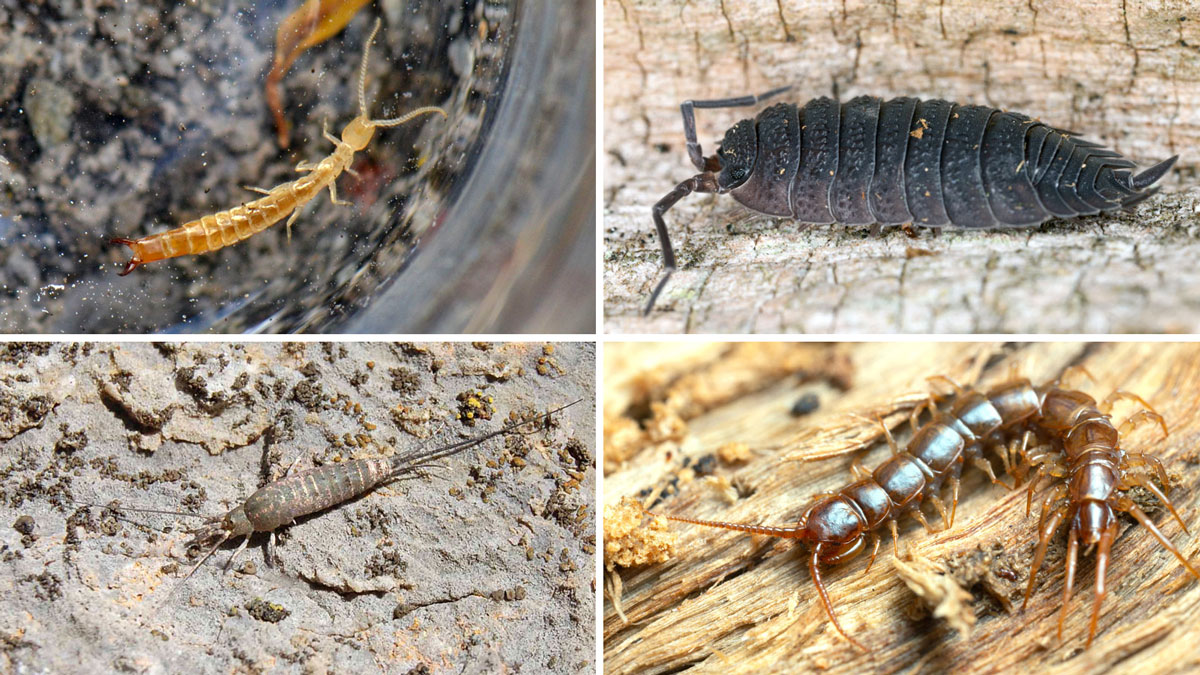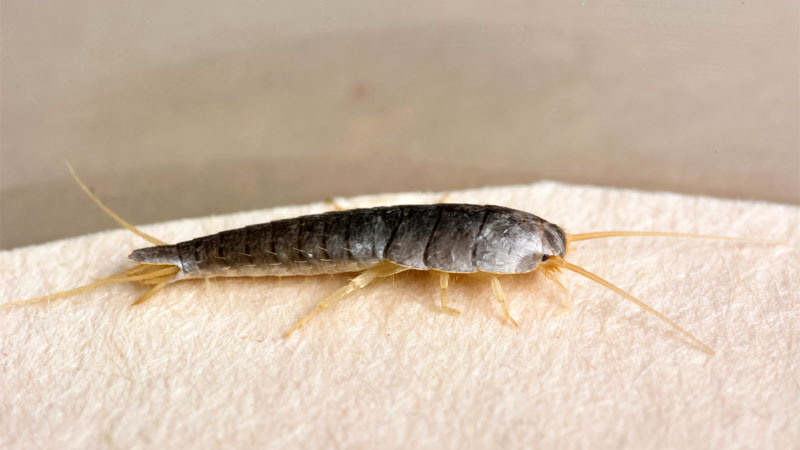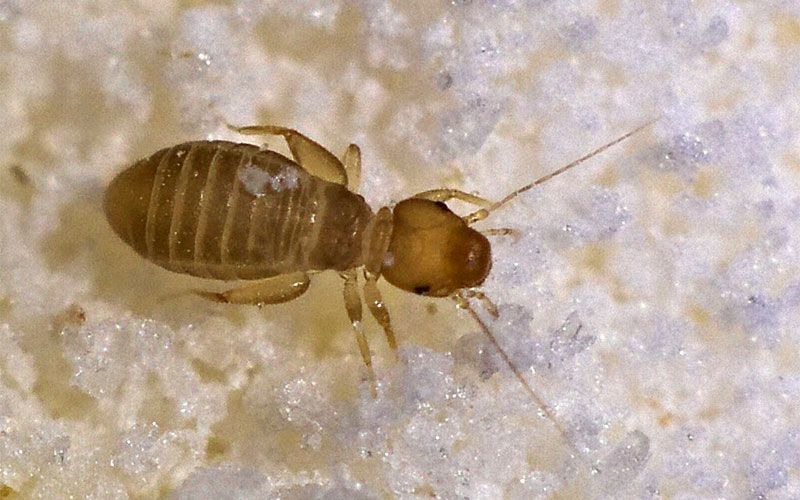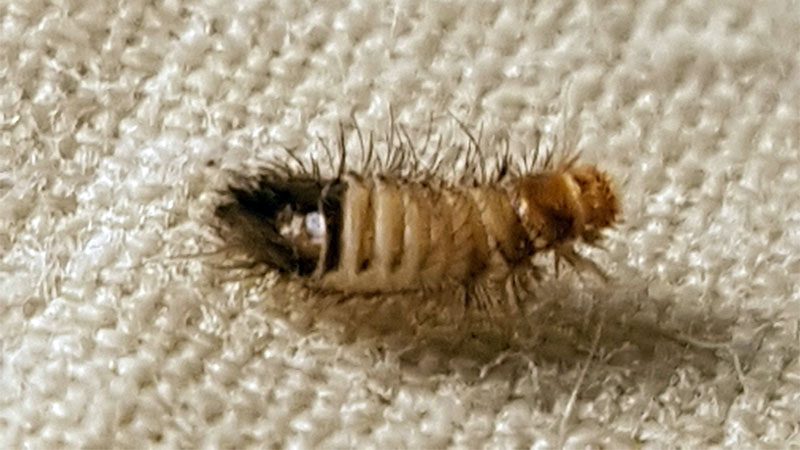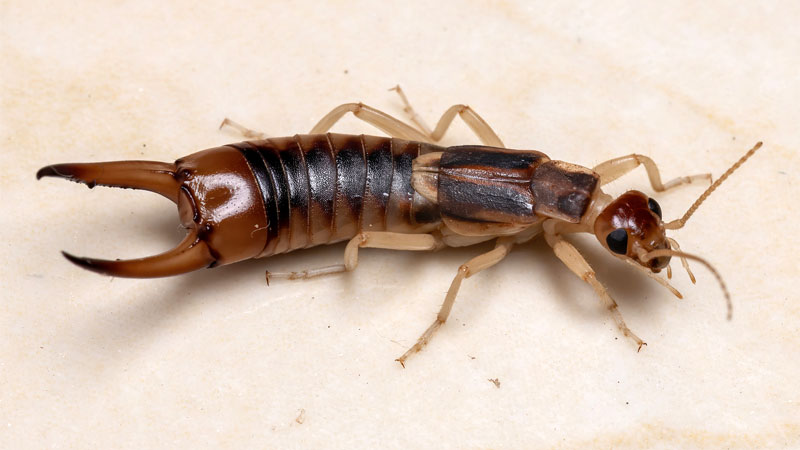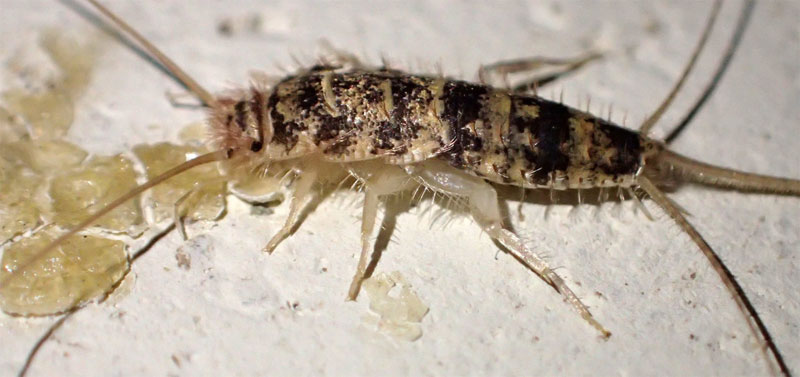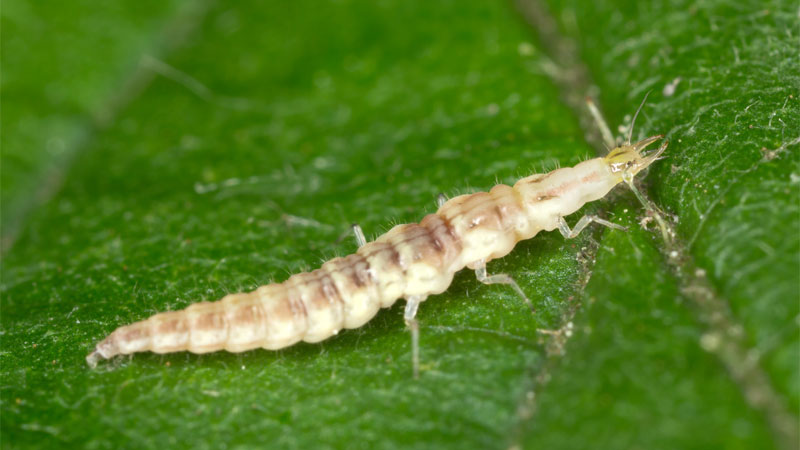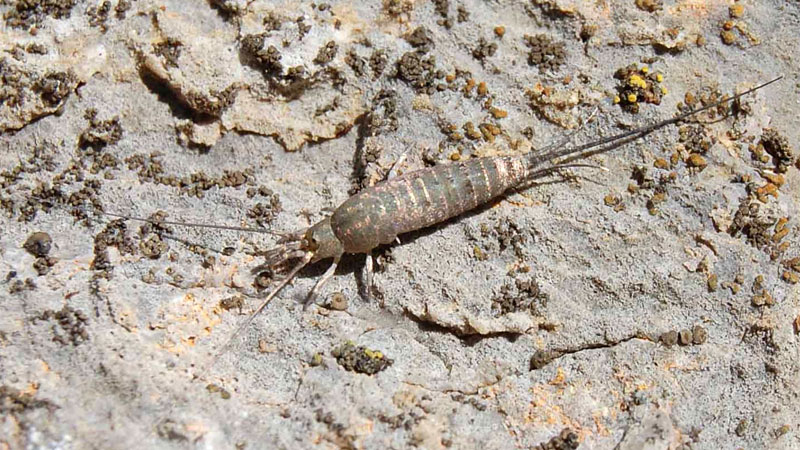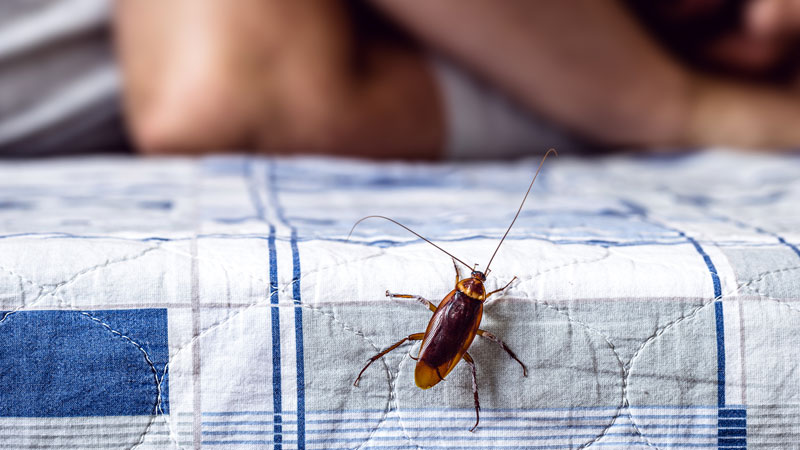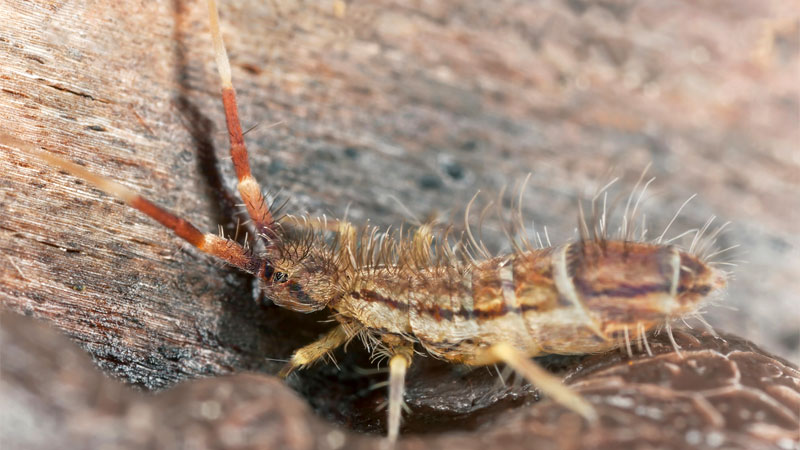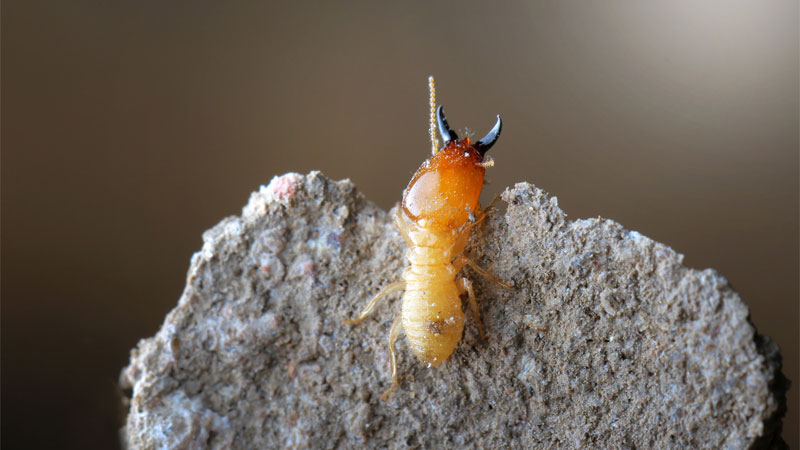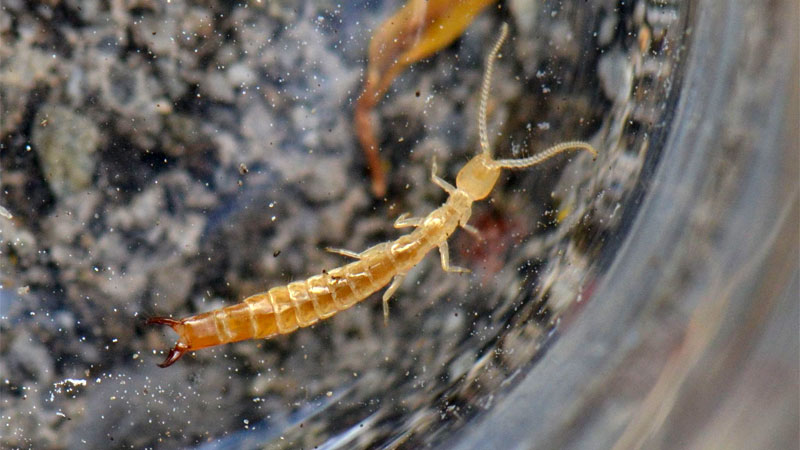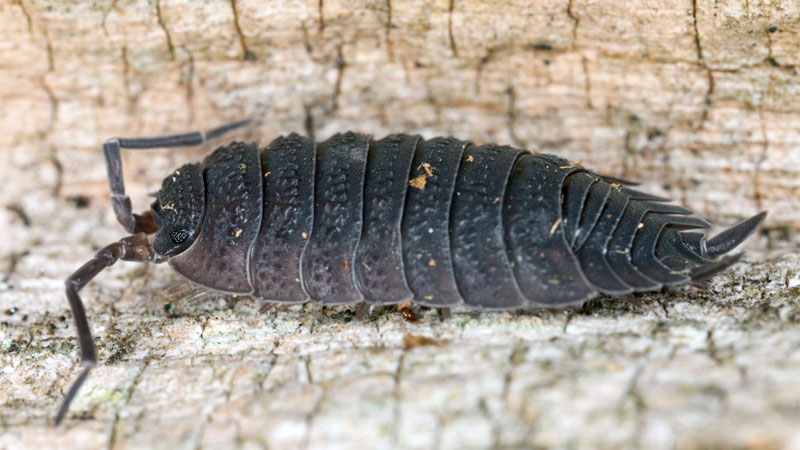Have you ever spotted something in your peripheral vision and sworn it was something only to later discover it bore no resemblance to what you thought it was? This is a common issue with bugs, which can be quite hard to see due to their size.
Today, we’re going to look at 12 bugs that resemble the infamous silverfish.
But first, here’s what a common silverfish looks like:
Read Also: 14 Bugs That Look Like Mosquitoes
Bugs That Look Like Silverfish
#1 – Booklice (Order Psocodea)
Booklice may look a bit more like bed bugs than silverfish when you get a good look at them. However, they often get mistaken for silverfish due to the feeding habits of some species.
For example, they are known to feed on grains and often sneak their way into packaged foods. Others eat the glue and cellulose of books, hence their common name. Because they’re often encountered trying to scurry away in your pantry, it’s not uncommon to thing a booklouse sighting is actually a silverfish sighting.
#2 – Carpet Beetle Larvae (Anthrenus spp.and Attagenus spp.)
There’s no mistaking an adult carpet beetle for a silverfish, but the larvae are another matter. These little pests resemble termites in shape but move in the same way as silverfish. They can be hard to spot because they hide among carpet fibers and embed themselves into other textiles as they devour the material.
Their coloration can be brown, gray, or white and often striped, which can add to the similarities to silverfish, depending on the species.
#3 – Centipedes (Class Chilopoda)
With more than 3,000 known species and an estimated 5,000 more yet to be discovered, centipedes are quite a large group of bugs. These creepy crawlies look nothing like silverfish when you put the two together, so why are they on this list?
The key is that centipedes move in a similar “swimming” pattern as silverfish, meaning it’s easy to spot one out of the corner of your eye and think it’s a silverfish. Centipedes can become quite large, depending on the species, but they’re also avid hunters.
The common house centipede (Scutigera coleoptrata) is between one and 1.4 inches long, with only around 15 pairs of legs and two cerci. Add in their grayish-yellow body and it can be even easier to mistake one for a silverfish than you’d first think.
#4 – Earwigs (Order Dermaptera)
There are more than 2,000 species of earwigs out there, and they can often be confused with silverfish because of their cerci. Female earwigs have straight cerci while males have the characteristic pincer-like cerci. Oddly enough, if a male loses one of his pincers, it will grow back straight like a female’s.
But even females can be distinguished from silverfish by the lack of an epiproct. Earwigs also have a cylindrical abdomen that ends bluntly where the cerci begin and tend to be brown in color compared to the lighter or silvery appearance of silverfish. Their heads are distinct and almost ant-like.
See Also: 11 Bugs That Looks Like Earwigs
#5 – Firebrats (Thermobia domestica)
If there’s one critter that’s almost indistinguishable from silverfish, it’s the firebrat. Firebrats are from the same order (Zygentoma) as silverfish and can be found in many of the same environments.
However, one of the key differences is that firebrats are more active in warmer temperatures. This means you’re more likely to spot a firebrat in an active kitchen than the basement.
Another difference is that firebrats tend to be only around 1/2 inch while silverfish can grow to as much as twice as long, yet they can live for as long as five years – which is twice as long as the common silverfish.
Firebrats are also a brownish-gray with darker brown bands. Because of how closely related firebrats are to silverfish, they’re often referred to as silverfish.
#6 – Green Lacewing Larvae (Chrysoperla carnea)
Lacewings are a valuable ally in the garden, hunting mealybugs and other common pests. Their larvae are very long and look like squished diamonds in shape. Not only can this make them resemble a silverfish in shape (sort of), but the diamond shape means it’s easy to mistake the front for the back.
When spotting a lacewing larva, the long, straight antennae can resemble cerci and the larva’s mandibles may be too small to notice without a magnifying glass.
#7 – Jumping Bristletail (Order Archaeognatha)
Not only are these critters very similar to silverfish, their two orders were once considered one and the same. There are two major differences that set these apart from the silverfish.
The first is that their epiproct is much longer than the cerci, which are relatively short. The second is that this “tail” allows the jumping bristletail to spring an impressive 12 inches into the air to startle predators.
Their thorax has a hunched appearance, and they have a diet of algae, mosses, and detritus. Of the 500 or so known species of jumping bristletail, none have a reputation of invading houses, which is perhaps the most important difference between these critters and silverfish.
#8 – Roaches (Order Blattodea)
Nothing’s worse than discovering cockroaches in your home, unless your name’s Joe. The actual appearance of a roach can vary greatly from one species to another, and there are many smaller species around the same size as silverfish.
These critters tend to be fast movers, which makes it easy to mistake one for a silverfish as they dart away from any source of light. Even worse, many species aren’t the dark browns you’d expect from the Big Three, and may be pale or even white, with some species having visible patterns.
It should be noted that the vast majority of roach species will avoid your home, but it’s possible for one to wander inside by accident, leading to a false silverfish alarm.
#9 – Springtails (Subclass Collembola)
Measuring between 1/16th and 1/8th inch in length, springtails make up the biggest group of hexapods while also being among the smallest in size. They come in a wide range of colors which include white and silver. These little bugs are known to terrorize gardens where they occasionally munch on plant roots.
While this often does little to no harm to the plant, it can kill saplings and sprouts. However, they also eat fungi and bacteria, aiding in decomposition. This has led to them being considered a (mostly) beneficial critter.
Their segmented bodies lack cerci and more closely resemble termites, but it can be difficult to notice their features without a magnifying glass and good reflexes. Why, you ask? Well they get their name because they curl their abdomen underneath where it is held in place with a biological hooking mechanism.
If the springtail is frightened or in danger, it releases its abdomen, causing the little hexapod to leap high into the air. The coloration of some species paired with their tiny size is what makes it possible to confuse them with juvenile silverfish.
#10 – Termites (Infraorder Isoptera)
There are nearly 3,000 known species of termites out there, and they can vary greatly in coloration. Many species are translucent or a very light hue, leading them to resemble silverfish at a glance.
Of course, termites have very different bodies, with large oval abdomens and almost ant-like heads. One of the interesting things about this critter is that they’re often associated with carpenter ants, yet they’re actually descended from roaches.
You won’t often see termites in your home, as they rarely leave the walls once an infestation veins, but you may spot them outdoors or occasionally spot a stray outside of the colony. Sightings are generally higher when it’s time to mate, as termite alates will start amassing at the entrances in preparation for the mating flight.
#11 – Two-Pronged Bristletail (Order Diplura)
There are around 800 species of this critter, although only around 170 can be found in North America. As the name implies, two-pronged bristletails have two cerci but lack an epiproct, which is perhaps the most notable difference between them and silverfish (if you take the time to look that closely, of course).
Their long, thin bodies don’t taper the way that silverfish do, and they have a visibly separate head. Their segmented bodies can be translucent or a wide range of colors. Their antennae are also distinctive, with ten or more beaded segments.
Two-pronged bristletails are actually known to be a sign that your soil is in good health, as they prefer moist, humus-rich earth. You’re not likely to find one inside your home unless it was brought in by accident via potted plant or some similar means.
#12 – Woodlice (Suborder Oniscidea)
At first, the term woodlice might seem unfamiliar, yet you’ve no doubt encountered pill bugs (family Armadillidiidae), which are a type of land-based crustacean famous for being able to roll up into little balls if threatened.
Woodlice tend to have a somewhat similar appearance overall, although size, exact shape, and color can vary greatly. Some have an almost teardrop-shaped body like that of a silverfish.
Gray to whitish shades on many species further add to the similarity. However, they have very different movement patterns and woodlice tend to be a bit slower when on the run.
- How to Get Rid of Hawks - March 8, 2024
- How to Get Rid of Pill Bugs (Rolly Pollies) - March 1, 2024
- How to Get Rid of Groundhogs (Woodchucks) - February 5, 2024

